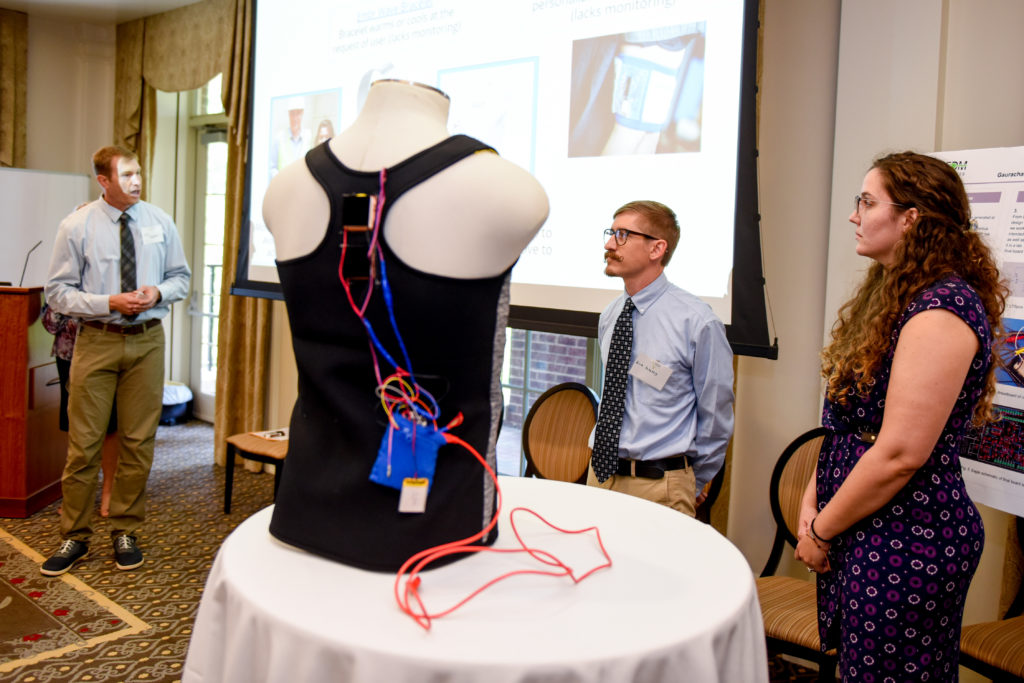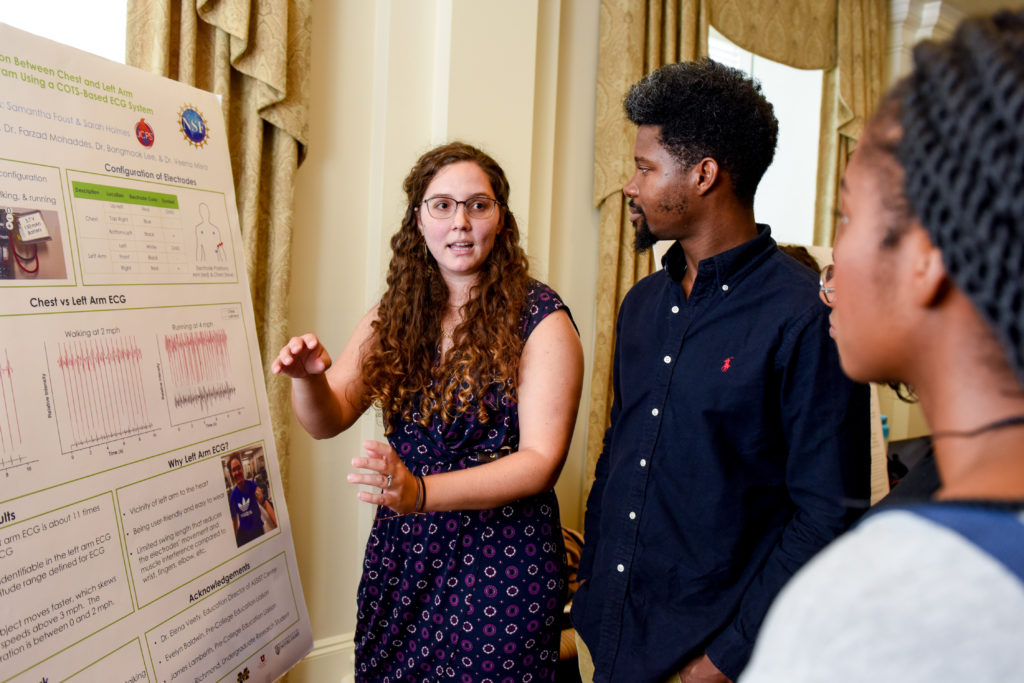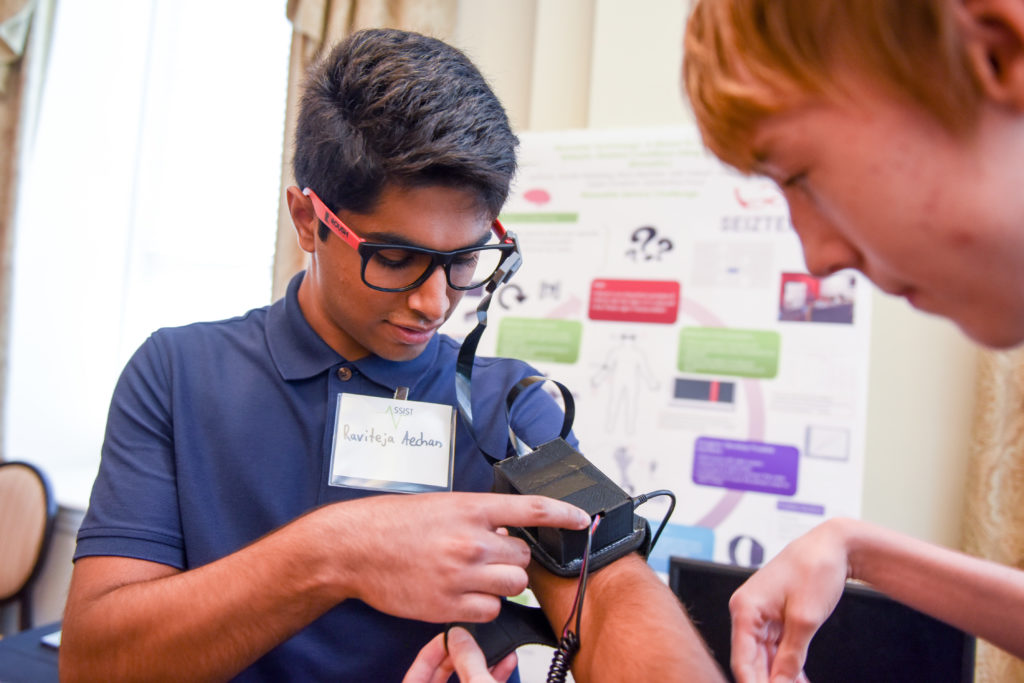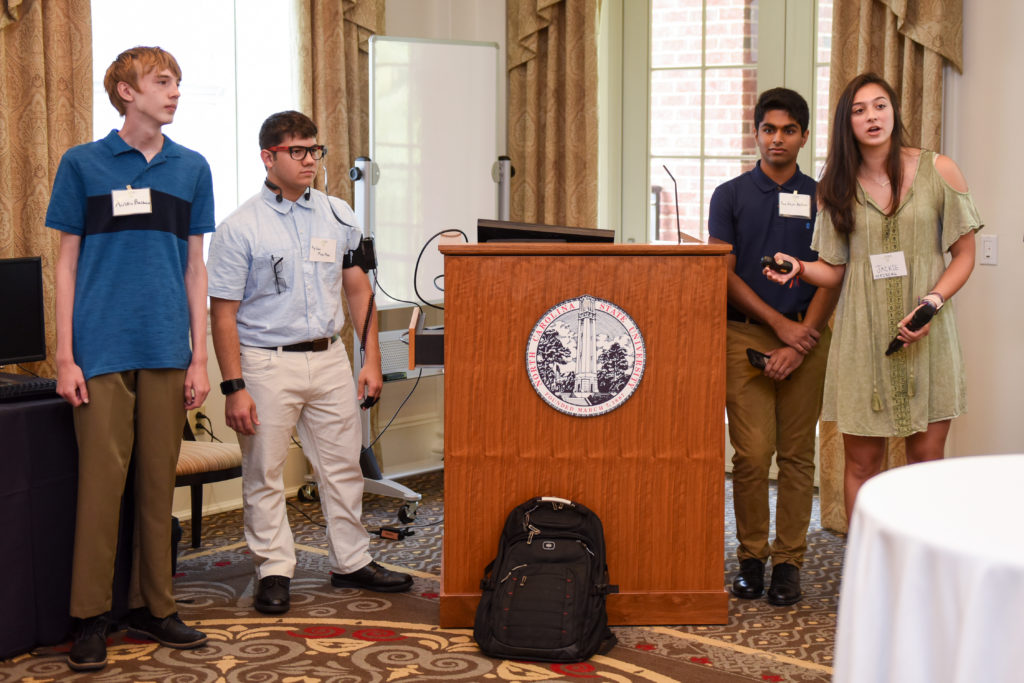For six weeks during the summer, our young scholars and teachers participating in the RET program worked very hard on their group and team projects.
Every young scholar got paired up with a teacher to work on a project which they all eagerly documented on our social media accounts. In addition to the independent research, the young scholars and the RETs also worked in teams on their final assignment. Both final projects embody ASSIST’s core mission by creating wearable devices that address key issues related to health and wellness. They presented their research on July 26, 2019 in collaboration with the FREEDM Systems Center.
Polar Wear

Inspired by the issue of climate change with steadily record-breaking heat temperatures every year, the RETs decided to work on a smart garment that could monitor and help prevent the occurrence of heatstroke. Their goal was to “create a self-powered wearable system that monitors symptoms of heatstroke (e.g. rapidity of breath, racing heart, body temperature) and regulates body temperature by cooling the wearer using a device on a pulse point.”
Thus, they invented “Polar Wear,” a company selling smart garments that monitor body temperature and heart rate and alert the user of unsafe conditions while also triggering an active cooling element.
Although there are currently cooling vests on the market, the RETs’ research found that none of them automatically cool the user based on sensor data, thus adding a crucial proactive component to their imaginary company, Polar Wear. If the user’s body temperature gets too hot, a temperature sensor will set off an alarm as well as automatically turn on the cooling system.

Inside of the vest is a fixed thermal electronic generator (TEG) which serves as the cooling element, as well as a temperature sensor, pulse sensor, and visual/auditory alarms. For future advancements, the RETs want their vest to withstand multiple wash cycles by creating a waterproof device. They also hope to adapt the device for use with pigs since they are not able to sweat and thus easily overheat leading to death and significant financial hardship to farmers. Pigs also have very little body hair (unlike other animals) which would make the application easier.
Seiztek

Next up were our young scholars who addressed the problem of seizures. They invented “Seiztek,” an imaginary technology company offering a wearable device to measure the impact of seizures using a three-sensor system. Since most seizures happen unexpectedly in a non-hospital environment, the young scholars were particularly keen on finding a wearable solution for everyday use. Their research found that heart rate alone is not the only key indicator predicting a seizure. Eye movement and overall stress levels also play a crucial part. Consequently, they created a device that uses combined biometrics, i.e. heart rate, eye tracking, and overall stress levels. The young scholars’ device consists of a wrist band with an alert system, glasses that track eye movement, heart rate monitor, and EDA (electrodermal activity) sensor that measures galvanic skin response (i.e. stress levels).

When building their prototype, the students used Raspberry Pi and three different sensors to measure their biometric data. After lots of testing, evaluating the parts and placement of the sensors for optional connectivity and getting a special analog to digital converter for the Raspberry Pi (a fully functioning credit-card sized computer), they were able to finish their final design. As the next steps, the young scholars have outlined a potential publication and further testing to learn more about the complexity of seizures.

